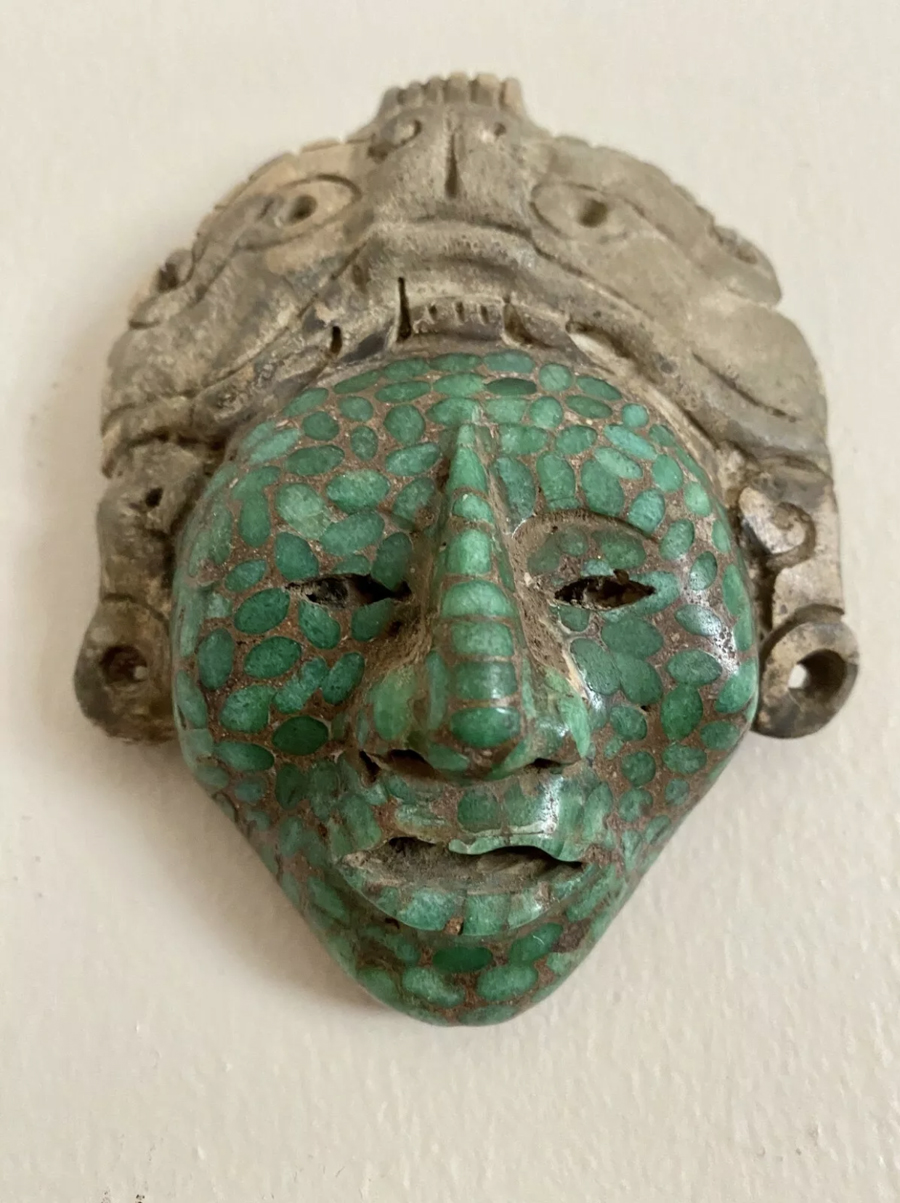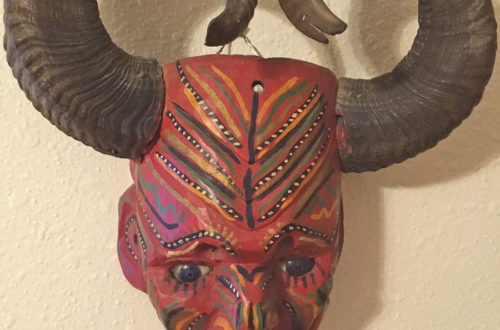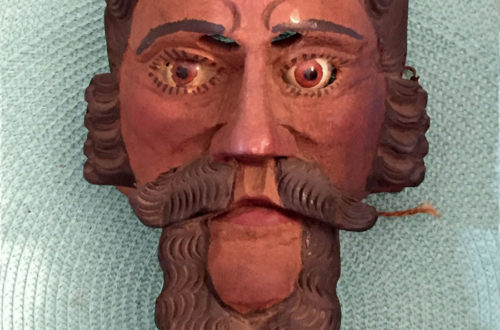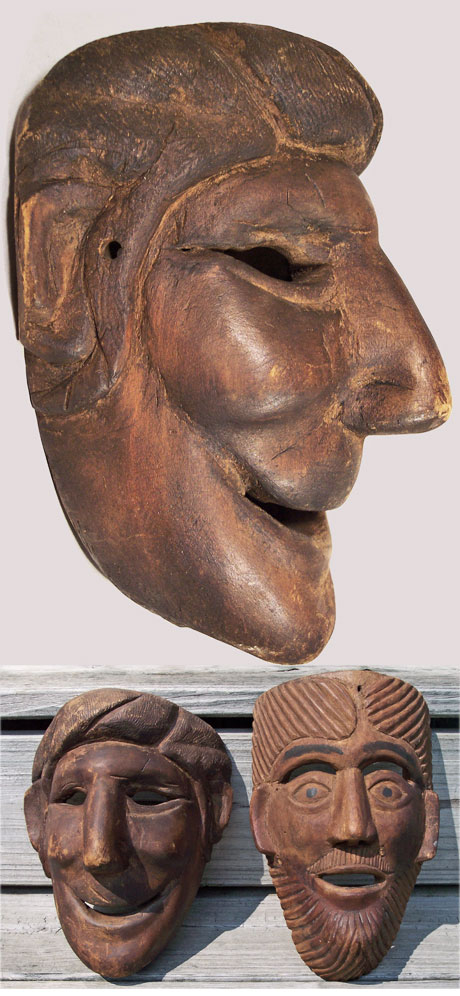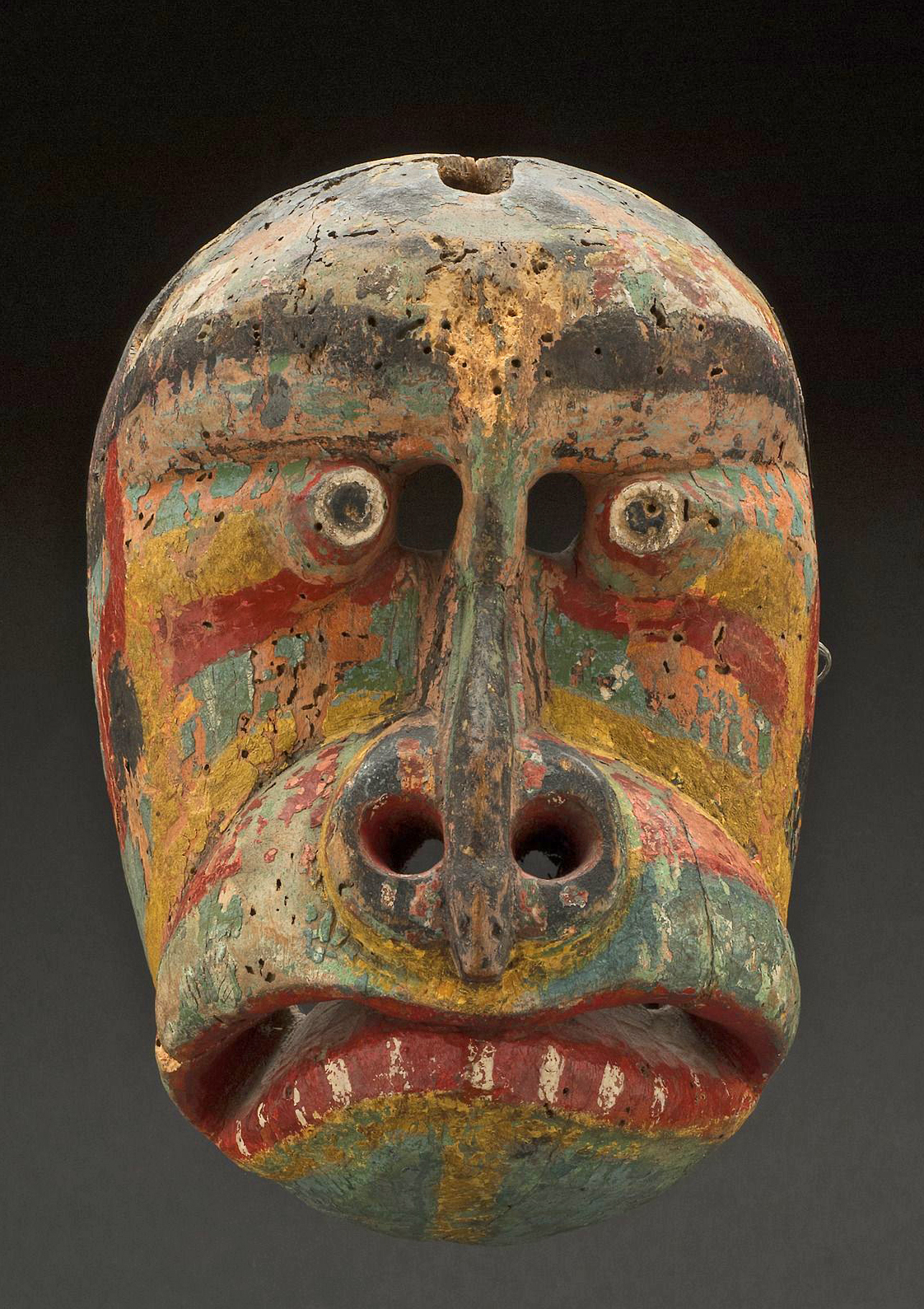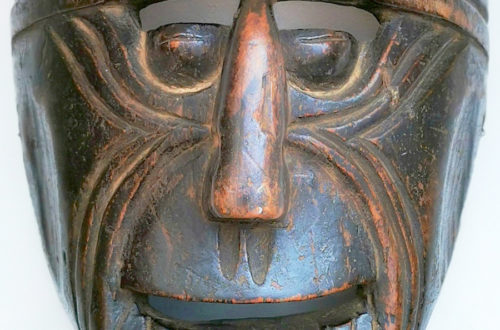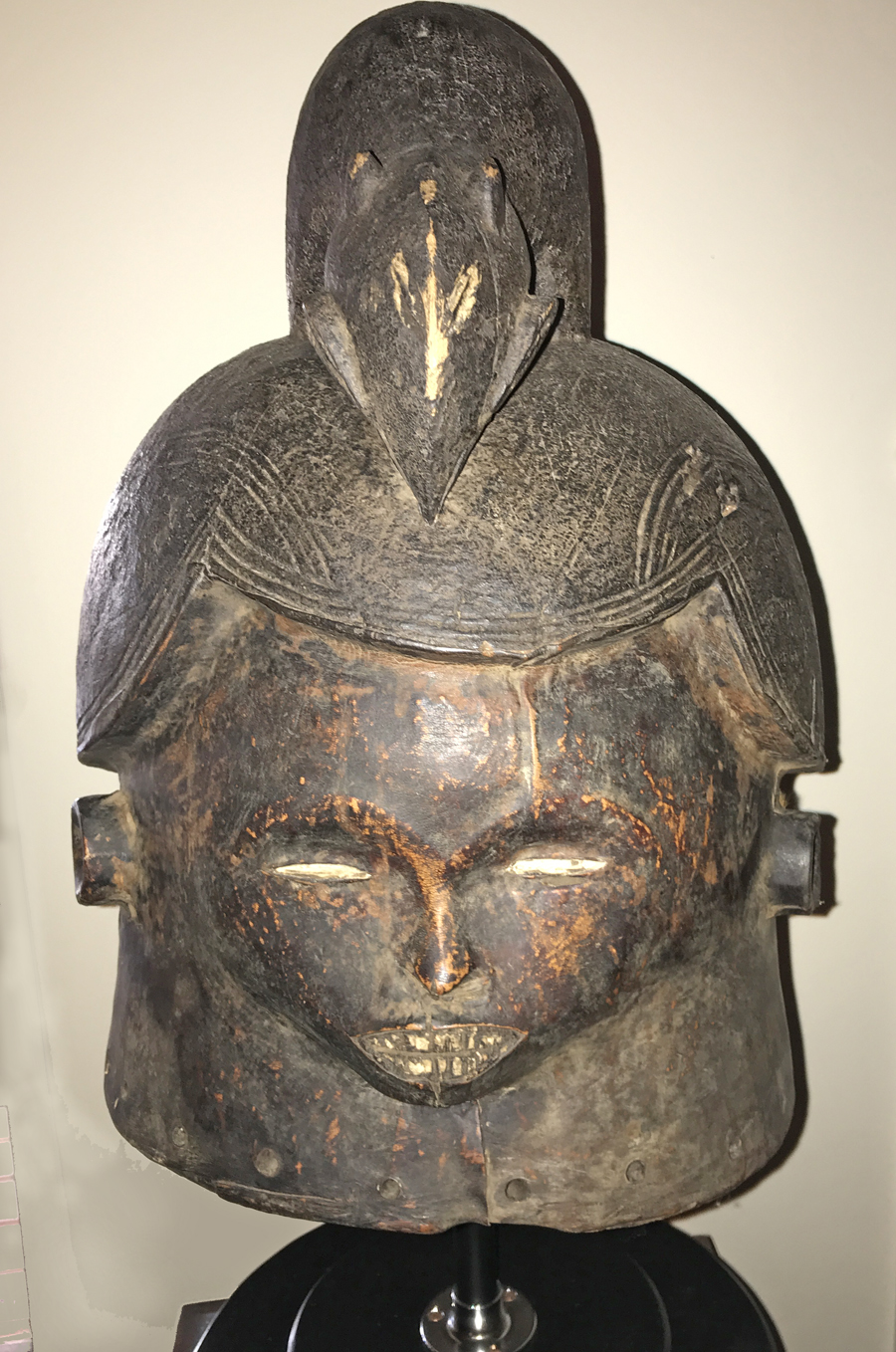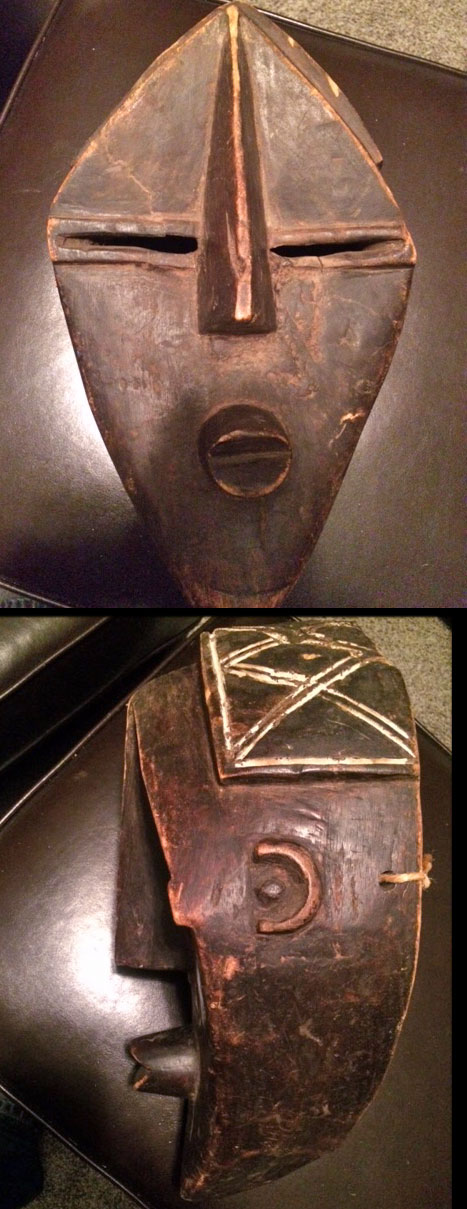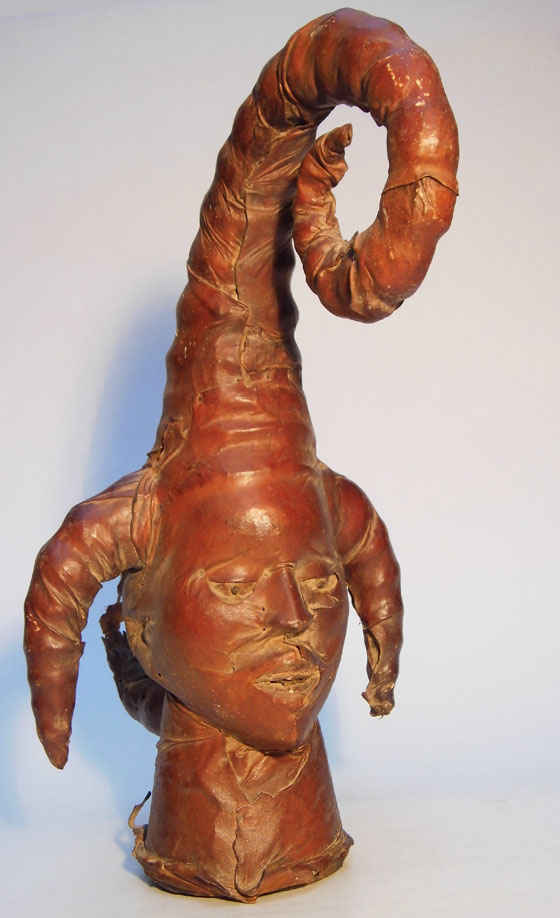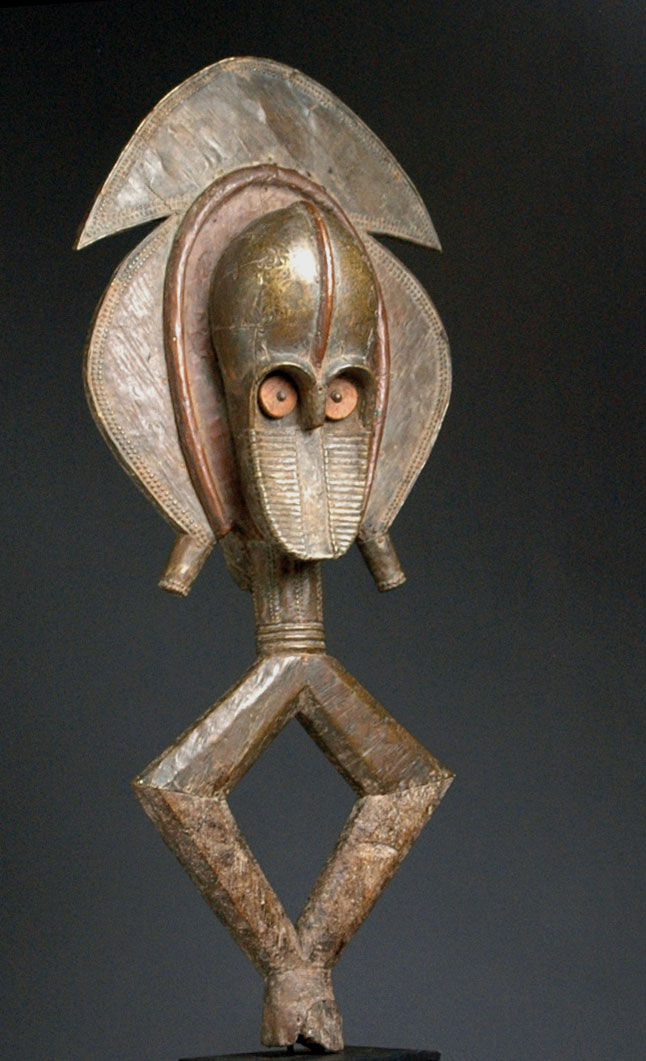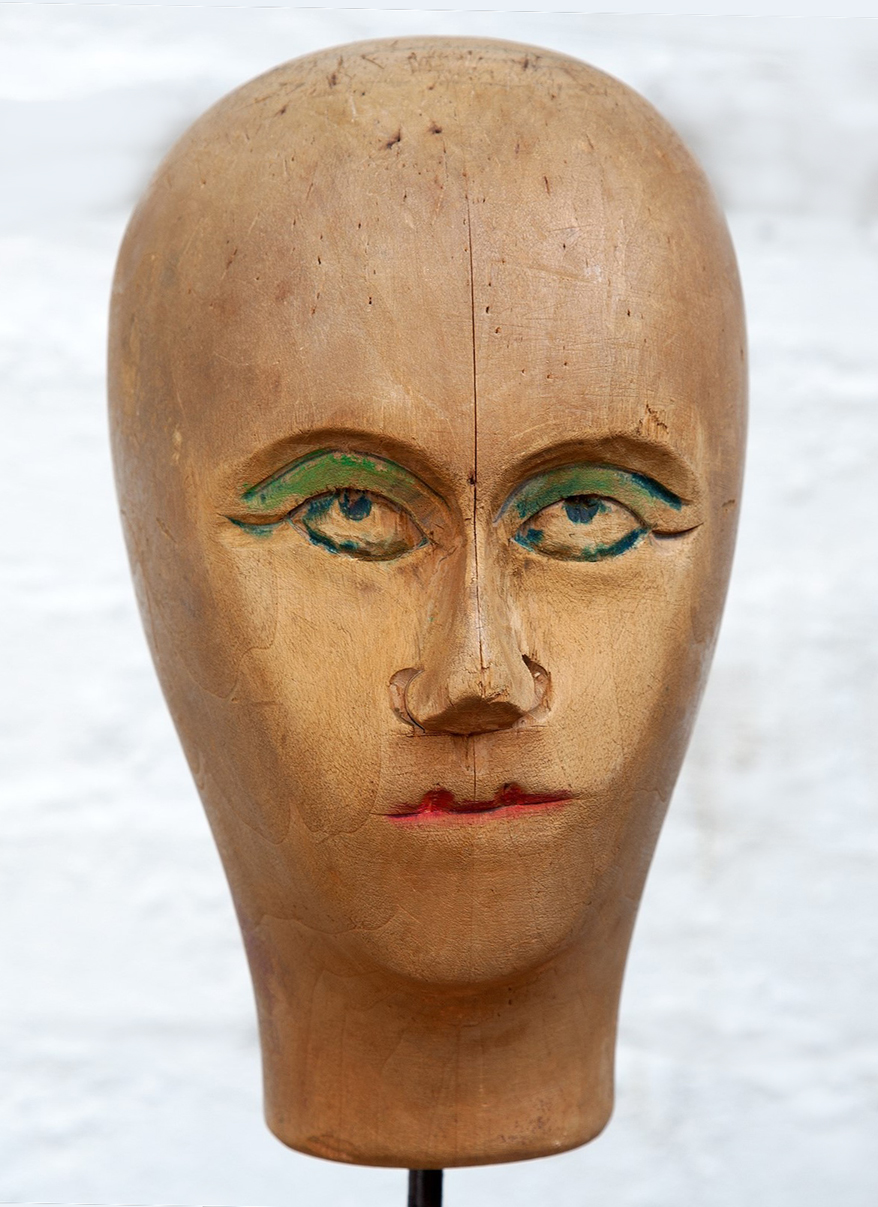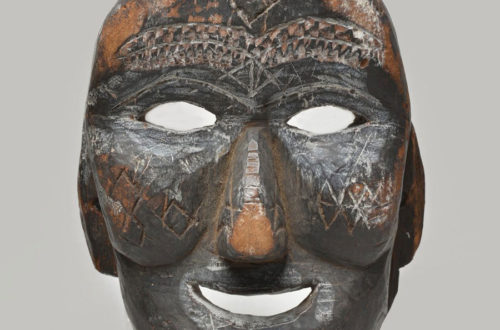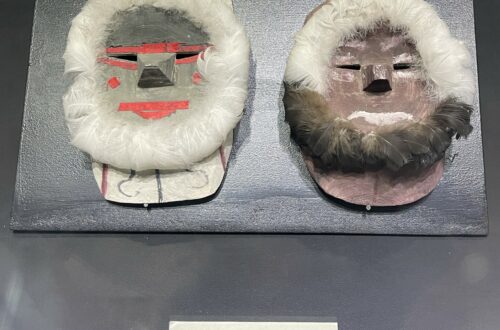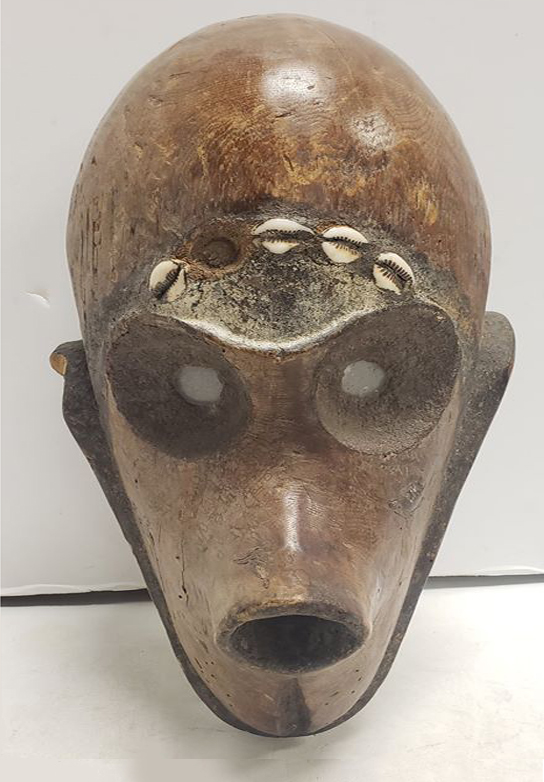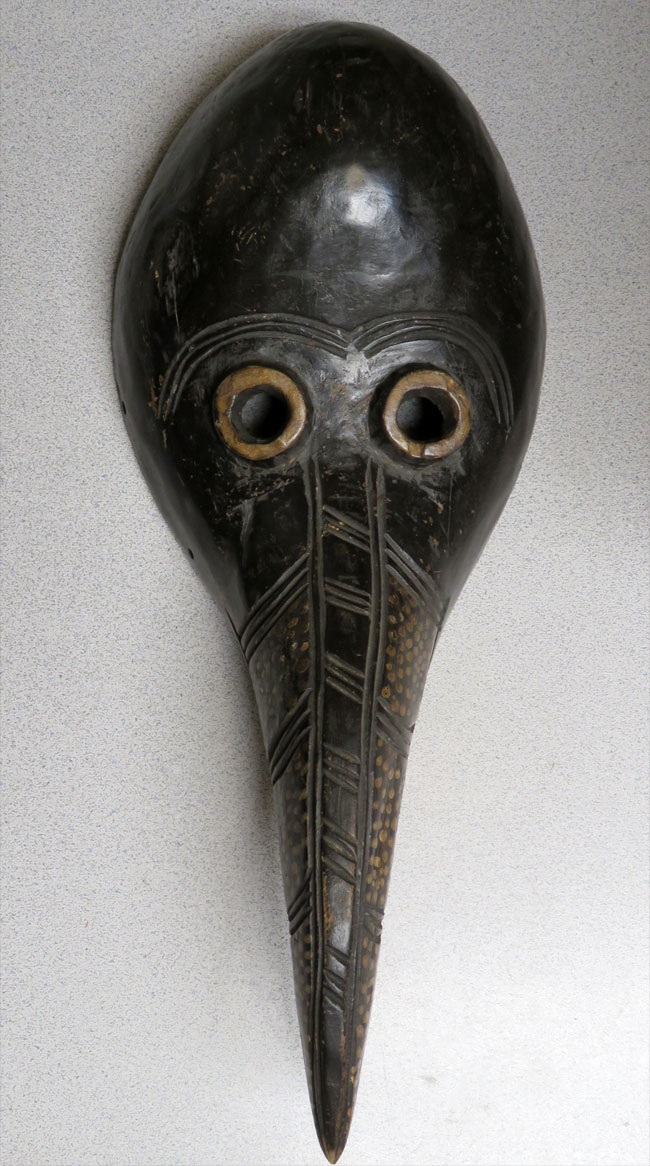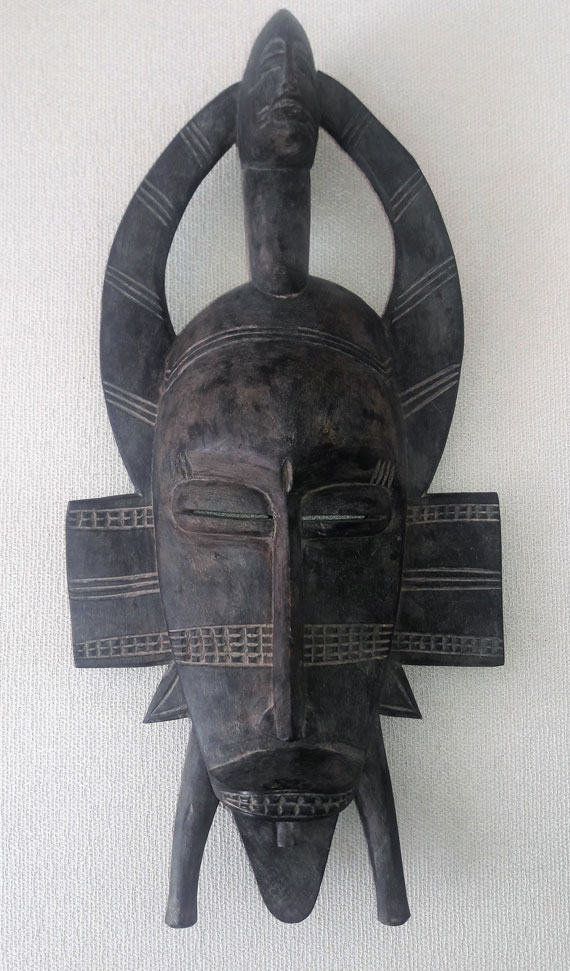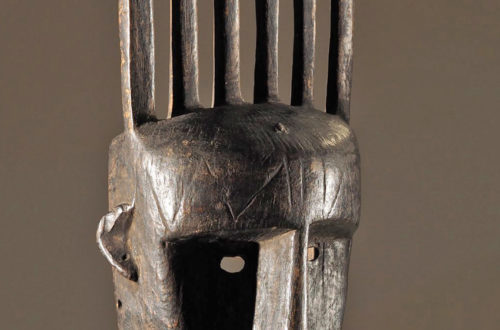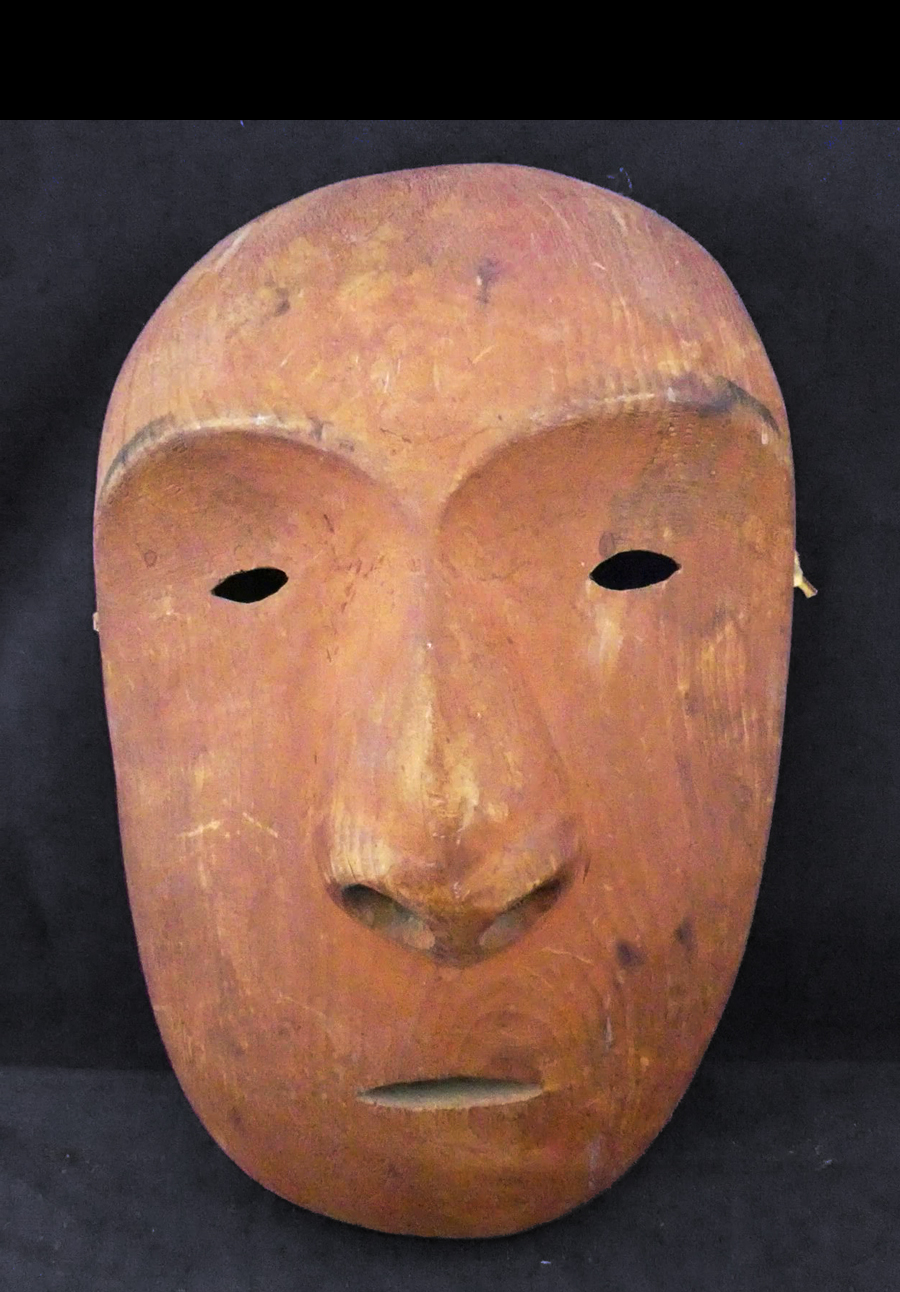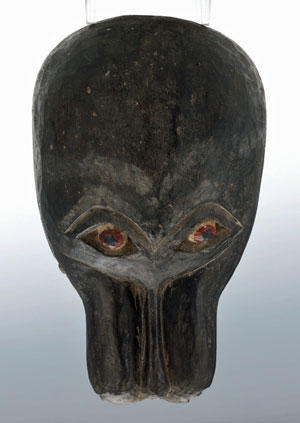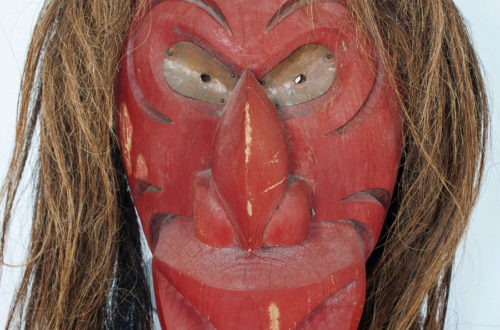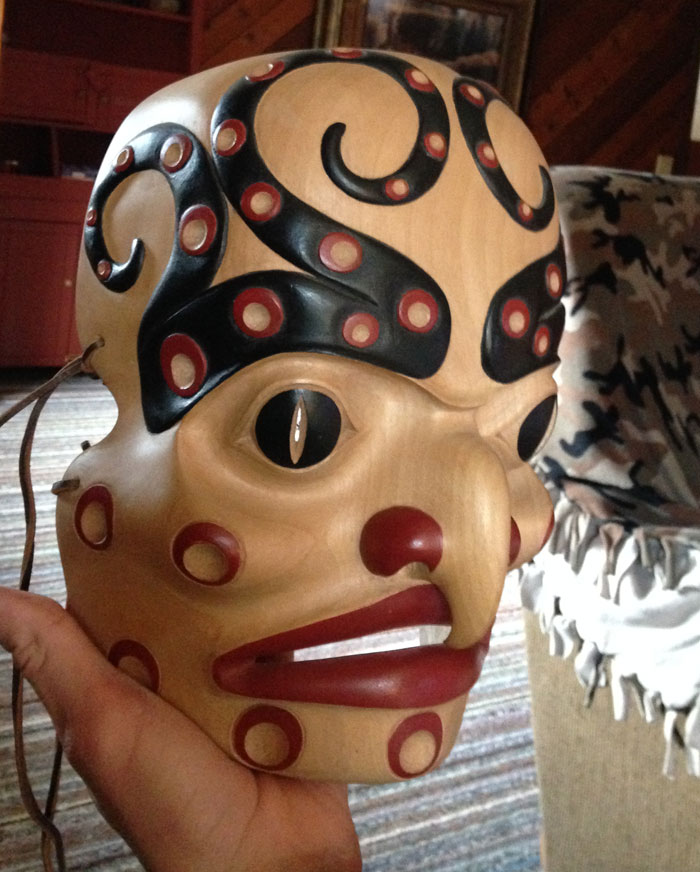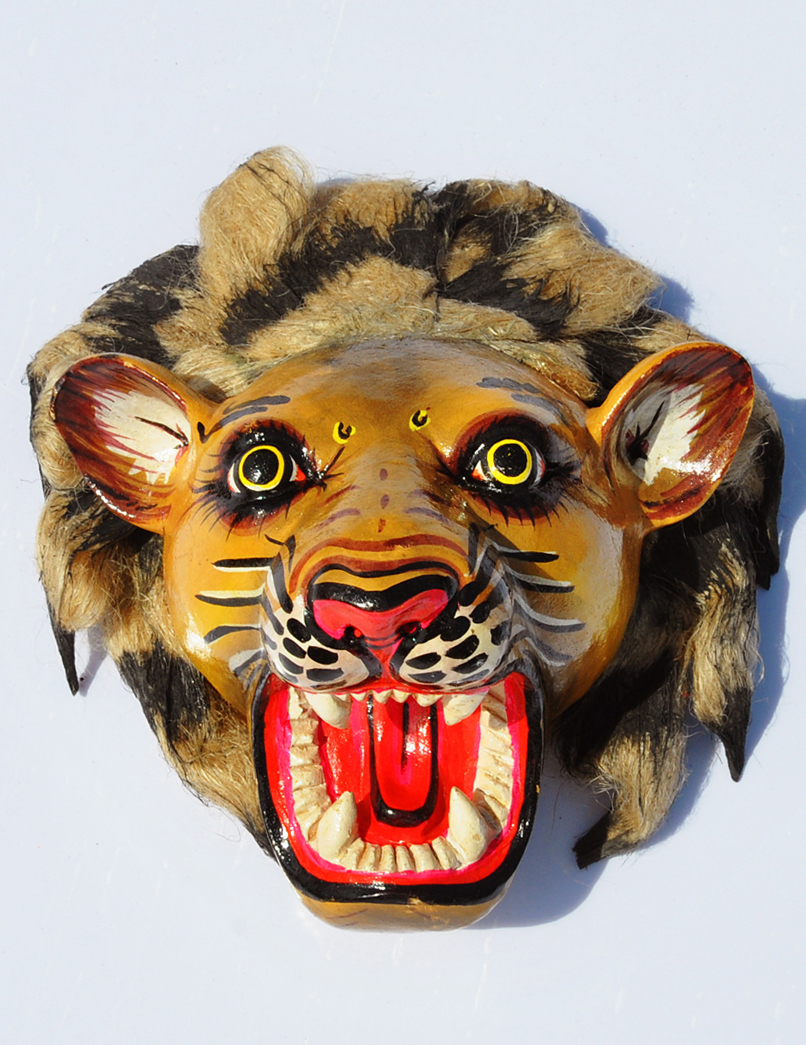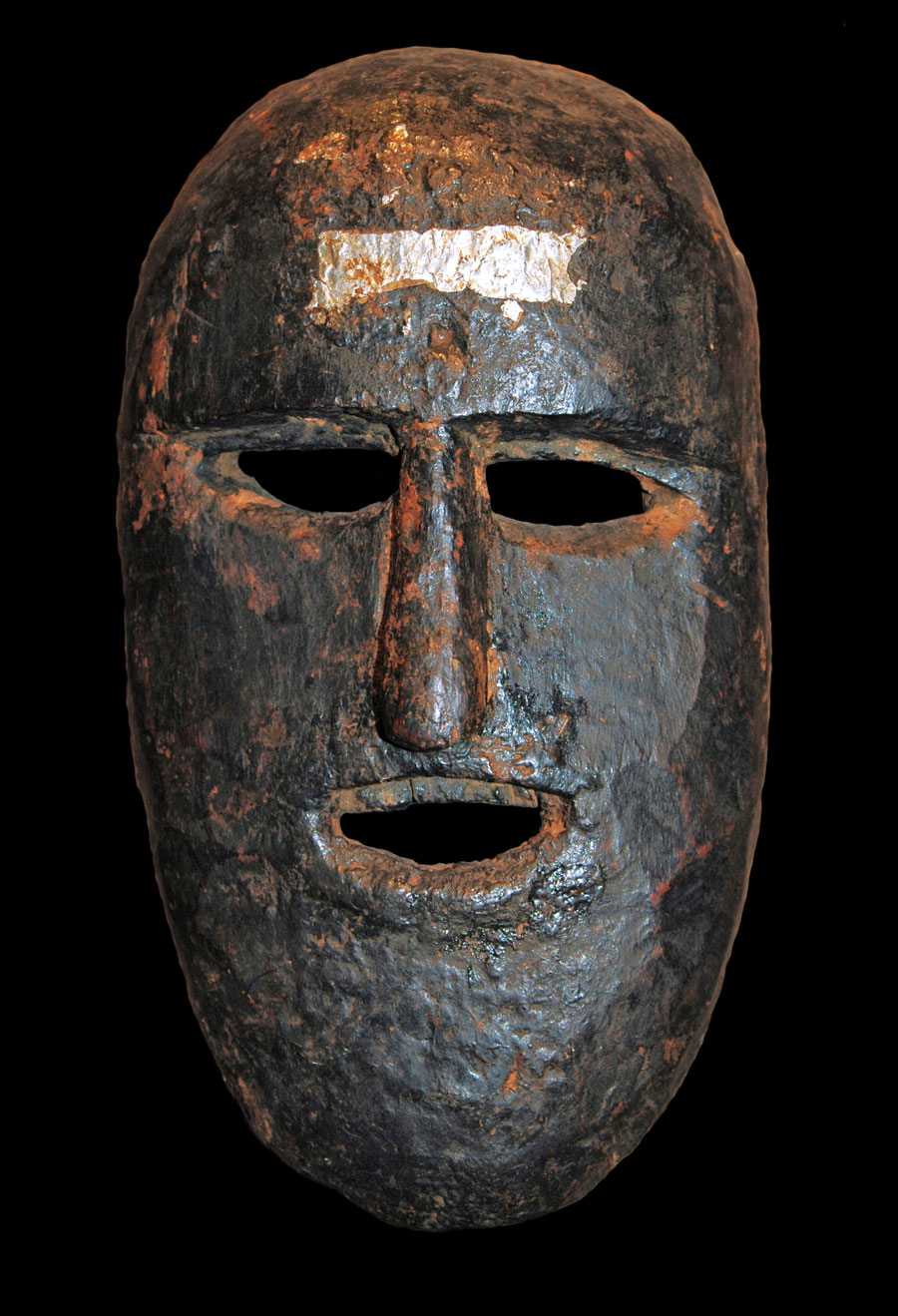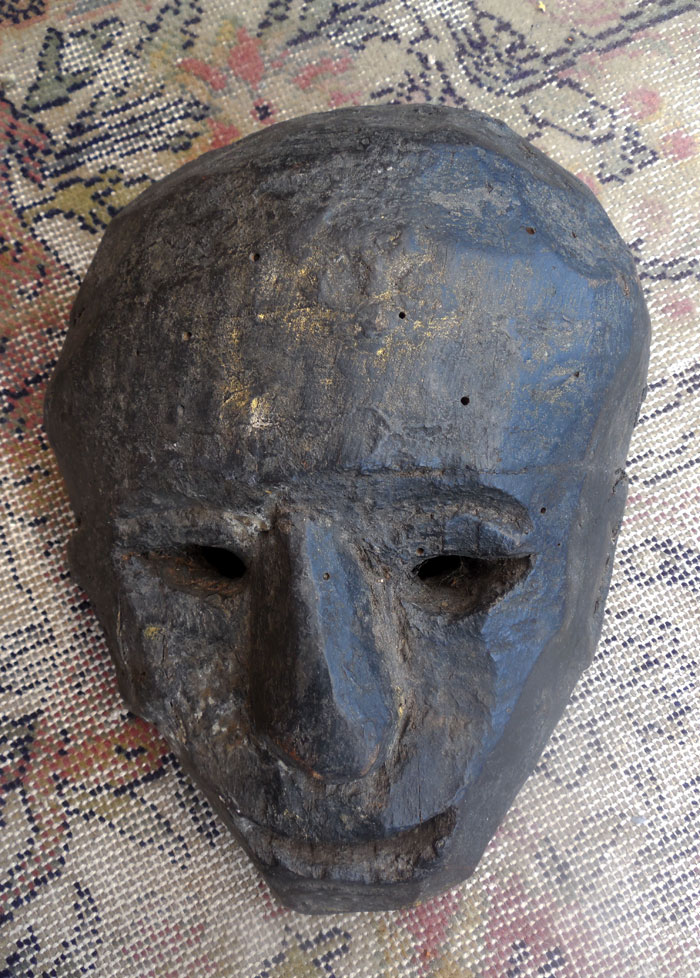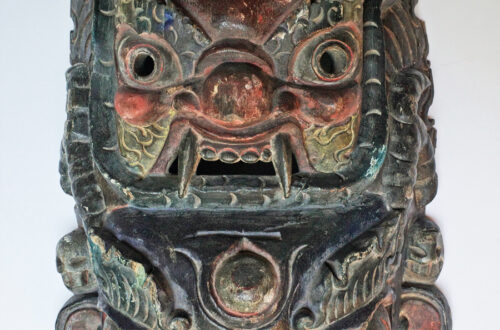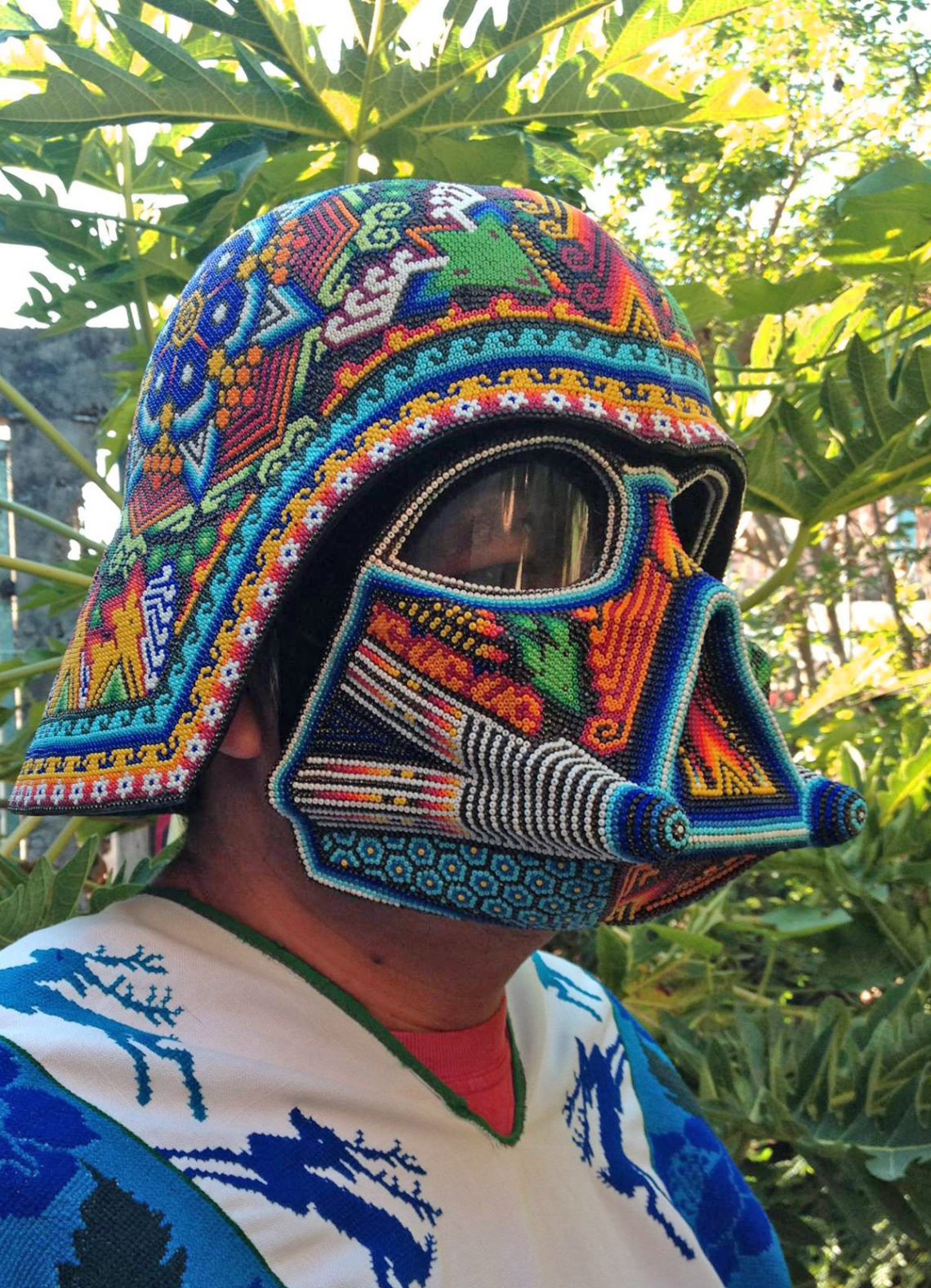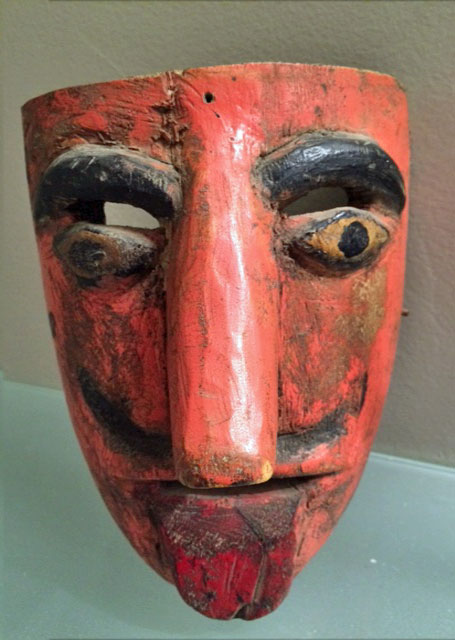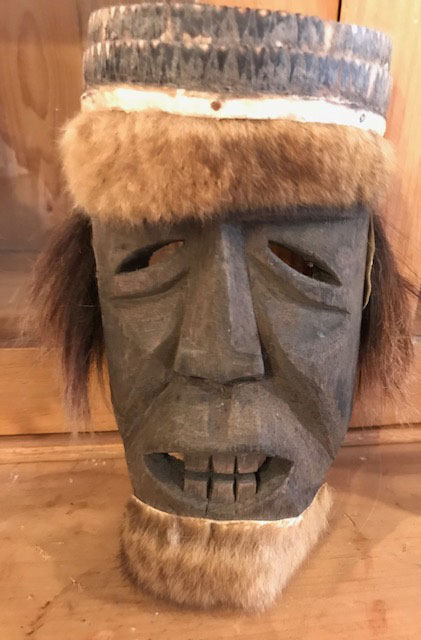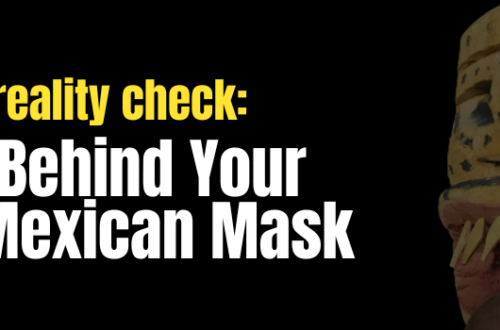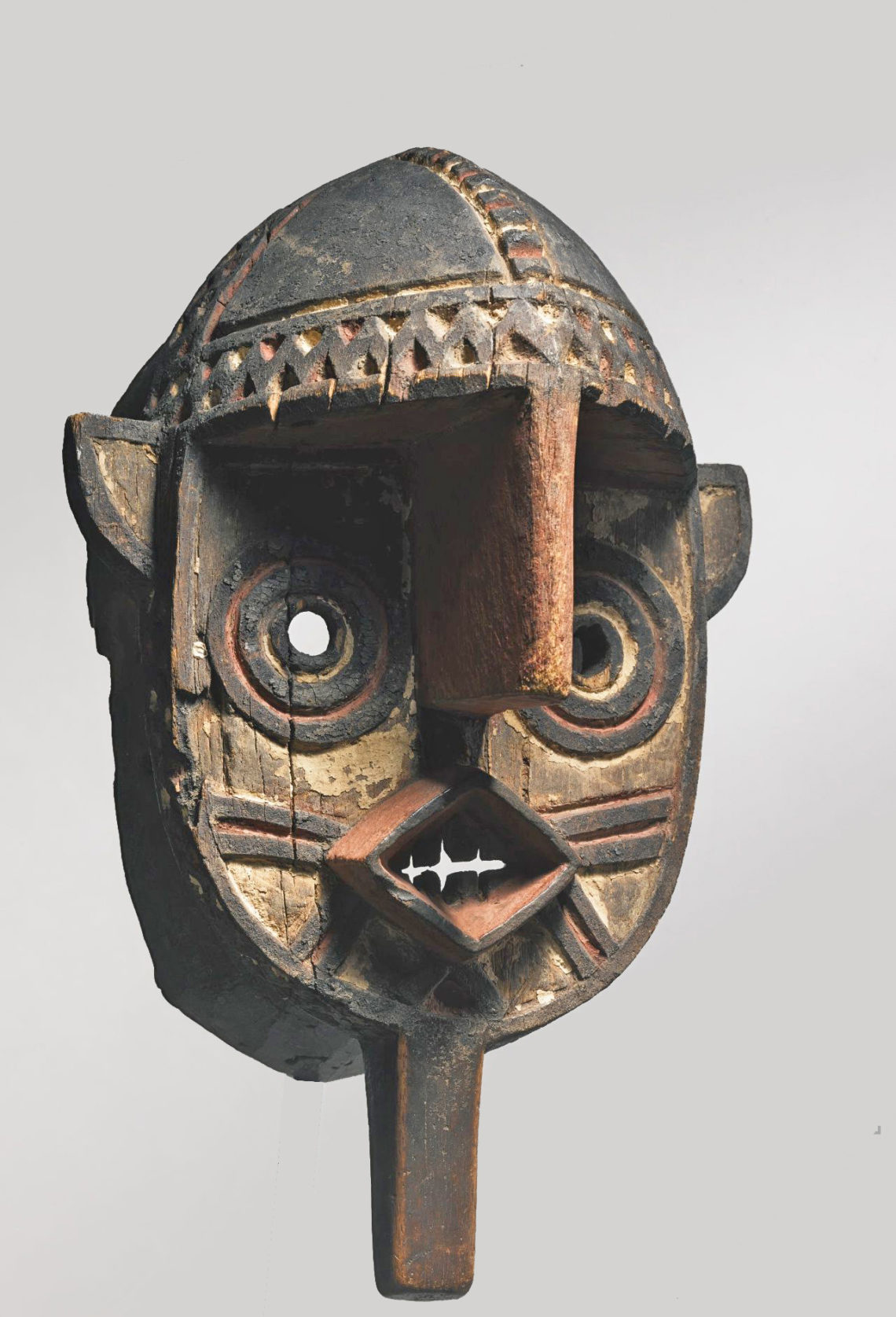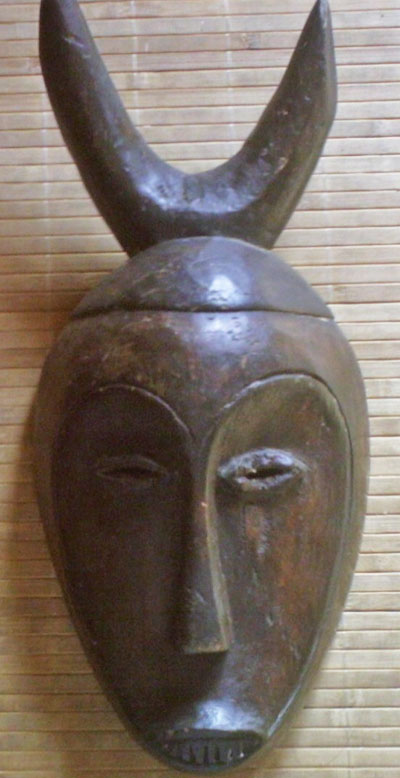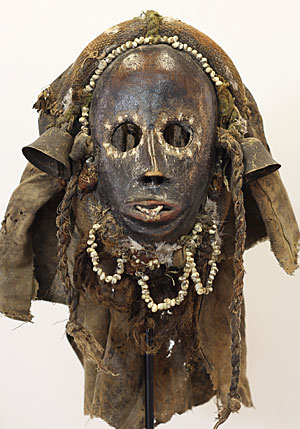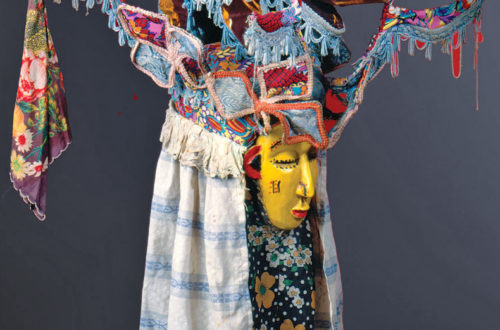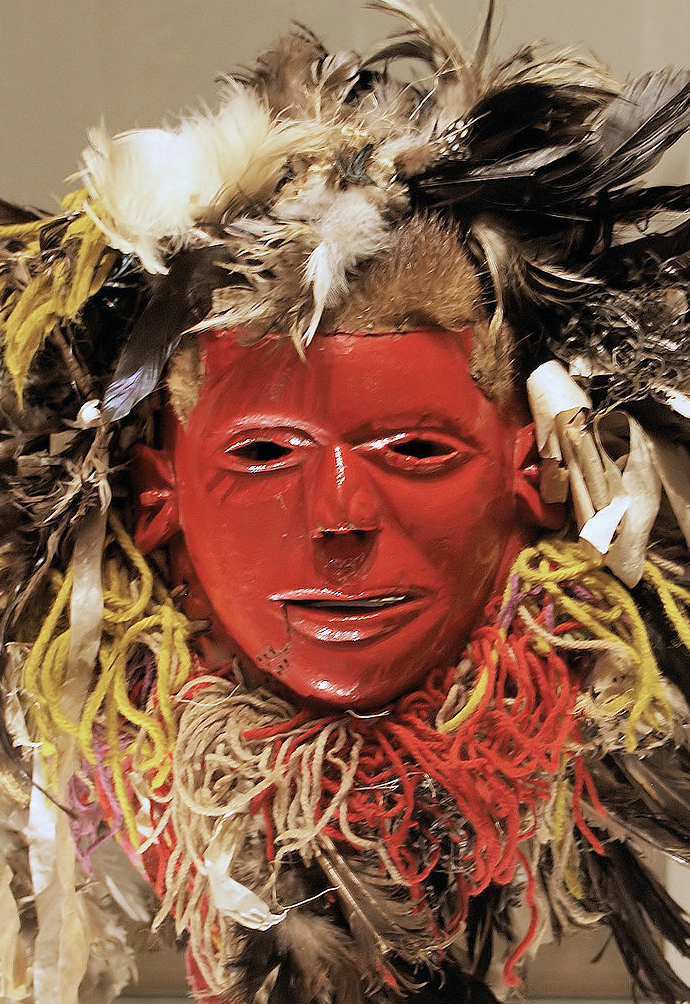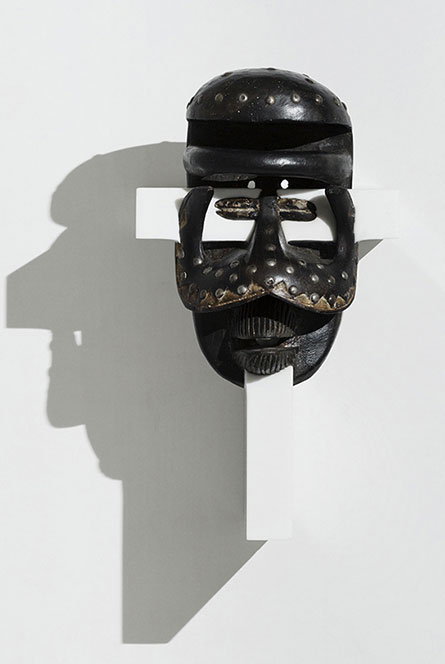Q: Does this mask look like a repro or a legitimate Mexican pre-Columbian piece. It is 3” x 5”. Is is jade adhered to pottery on a wooden base. Paula, 1739 A: It’s a beautiful piece that shows you what an Mezcala, Olmec or Mayan masks could look like before the Spanish invaded the new world. Otherwise, I can’t help much because I never got around to learning about early MesoAmerican masks. The big question is whether it is authentic or a recent reproduction. Please don’t sell it until you know for sure. There are labs that can tell you the age of the mask.
-
-
Guatemalan mystery mask
Q: I saw this fabulous mask on the internet and was told only that it was from Guatemala. I’d never seen anything like it. So I sent the picture to Jean, the famous Guatemalan expert, thinking it might be a rare, authentic Diablo. Here is what he had to say… A: It could be a devil from Alta Verapaz, which has lost its horns (usually 3 horns – middle horn fixed on the top, reason for the large hole). Could be softwood, considering worms holes. As said, the mouth makes me think to Alwasiir (Baja Verapaz) or Murcielago (Alta Verapaz), but these have a rather constant design: they are always…
-
Hemba helmet mask from the DRC
Q: Please, can you appraise this mask for me. Sold to me as Ekoi, which it is not. Possibly Suku? It has a leather covering of the facial and neck areas. Bought in South Africa. No provenance. I collect masks from Western and Central African– genuine, tribally-used items only. David, 1736 A: You are correct. It is a Hemba mask from the Suku people in the South-western part of the Democratic Republic of the Congo. Unfortunately, I must remind you that reproductions of Hemba helmet masks are numerous, and they are always made to look old and used. Yours may be an exceptionally well-made repro. I advise you to keep…
-
Wig maker’s head on stand
The Mask Man has been isolated in his house away from the corona virus for too long. I think I am going crazy. What I’m showing you today is a solid wood carving of a bald woman’s head on a steel stand. Years ago the maker would use it to craft a wig… and/or display to customers. If I was younger and had more space, I would buy a wood head like this and display it in my house as sculpture. Occasionally it would be fun to put one of my many masks on her face. Would this amuse visitors? Back to masks tomorrow. Bob, 1735
-
Ogoni or Ibibio mystery mask
Q: This is an Ogoni tribal helmet mask from Nigeria, West Africa. Got it at a really great price. Carved out of wood, with glass eyes, it is more unique for any other mask we have come across before. It measures almost 16″ from top to bottom x 8″ wide x 8″ deep. It has shells across the top of the eyes, with one is missing. It appears to be quite old, but not sure of age. My guess is mid century or earlier. Shaun, 1734 A: Unusual design, very well made and a lovely patina that suggests usage and care, but you bought it cheap and have no provenance.…
-
2 masks from Kings Island
Q: Here are two nice examples of older King Island work. Jim, 1733 A: These two Inuit masks are so good I had to show them to you now. Hopefully, Jim will soon comment on their physical characteristics… and the usual who, what, when, where and how much. A, Bob
-
Chhau masks are used by millions
Collectors, galleries and museums are just beginning to discover the importance of this Indian folk art. Chhau has long been very popular. For years the people of Purulia in West Bengal have been making masks used in the Chhau dance — a semi-classical tribal dance of eastern India listed by United Nations Educational, Scientific and Cultural Organisation (UNESCO) as intangible cultural heritage of humanity. You might want to take a look at what we posted Feb 25, 2019:https://dev.masksoftheworld.com/chhau-mask-from-purulia-india/ There are many different characters in the Chhau ceremonies. On this page we have three: a lion, the goddess Durga and a male demon. The pandemic that now plagues the entire world…
-
Huichol mask from Mexico
From Austria to the Amazon, masks bring out the impulses of creative art. In my favorite foreign country, Mexico, there is an indigenous group living in the remote states of Jalisco, Durango, Zacatecas and Nayarit… called the Huichol. They have a long history of beading, making the beads from clay, shells, corals, seeds and more. In the middle of the 20th century they started to make wood masks covered in small, brightly colored commercial beads fastened with wax and resin. While the materials have changed from natural to commercial, the designs have changed a little, and many retain their religious and symbolic significance. Many outsiders experience Huichol art as tourists…
-
Bwa Nunuma mask, Burkina Faso
The Bwa and Nuna live in the dry savannah land of central Burkina Faso. Like other peoples in this area, the Bwa and Nuna seek the help of powerful spirits who live in the wild forests, bush country, and rivers surrounding their villages. The older Bwa masks were made with leaves, feathers and vegetable fibers. They were used in the rituals of the Do initiation society. Later, the Bwa began to carve wooden masks for their rituals, being based on the masks of their neighbors the Gurunsi/Nunuma and their cousins the Bobo. All Bwa masks represent the spirits of the nature who have some influence on the human being. Wishing…
-
Nice Chewa mask from Malawi
My first Chewa post was in Jan, 2019: https://dev.masksoftheworld.com/one-of-my-favorite-masks-chewa/ Recently I saw this one and really liked it. If you have an interest in authentic ethnographic masks, especially African, please explore the Nyau society masks of the Chewa in Malawi, East Africa. Masquerade there is still going strong. Bob, 1730
